
Mato Grosso is one of the states of Brazil, the third largest by area, located in the Central-West region. The state has 1.66% of the Brazilian population and is responsible for 1.9% of the Brazilian GDP.

Mato Grosso do Sul is a state of Brazil located in the Central-West Region. Mato Grosso do Sul borders the Brazilian states of Mato Grosso, Goiás, Minas Gerais, São Paulo and Paraná. It also borders the countries of Paraguay to the southwest and Bolivia to the west.
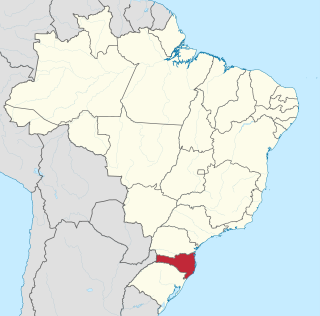
Santa Catarina is a state in the South Region of Brazil. Of Brazil's 26 states, it is the seventh-smallest state in total area and the 11th most populous. Additionally, it is the ninth-largest settlement, with 295 municipalities. The state, with 3.4% of the Brazilian population, generates 3.8% of the national GDP.

Campo Grande is the capital and largest city of the Brazilian state of Mato Grosso do Sul in the Center-West region of the country. The city is nicknamed Cidade Morena because of the reddish-brown colour of the region's soil. It has a population of 906,092, according to a 2020 IBGE estimate.

Corumbá is a municipality in the Brazilian state of Mato Grosso do Sul, 425 km northwest of Campo Grande, the state's capital. It has a population of approximately 112,000 inhabitants, and its economy is based mainly on agriculture, animal husbandry, mineral extraction, and tourism, being the gateway to the biggest wetlands of the world, the Pantanal. Due to its border with Bolivia, Bolivians in Brazil constitute a significant portion of the city's population, forming a distinct cultural community.
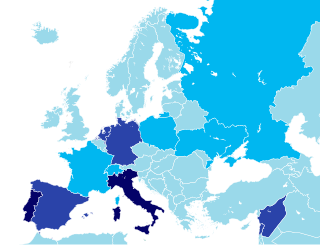
Immigration to Brazil is the movement to Brazil of foreign peoples to reside permanently. It should not be confused with the forcible bringing of people from Africa as slaves. Latin Europe accounted for four-fifths of the arrivals. This engendered a strikingly multicultural society. Yet over a few generations, Brazil absorbed these new populations in a manner that resembles the experience of the rest of the New World.
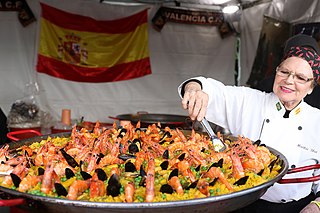
Spanish Brazilians are Brazilians of full or partial Spanish ancestry.
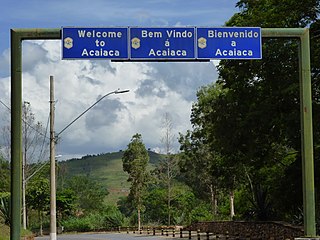
Portuguese is the official and national language of Brazil being widely spoken by most of the population. Brazil is the most populous Portuguese-speaking country in the world, with its lands comprising the majority of Portugal’s former colonial holdings in the Americas.

BR-163 is a highway in Brazil, going from Tenente Portela, in the state of Rio Grande do Sul, to Santarém, Pará, on 3579 kilometers .. It was proposed to pave the road in its entirety part of the Avança Brasil project, which in 2007 was replaced by the Programa de Aceleração do Crescimento. A 51 km long stretch of the highway was finally paved in 2019 in the state of Pará in a cooperation between the Bolsonaro government and the Brazilian army engineering battalion, until the city of Miritituba, leaving only a small part of the highway to be paved on the other side of the Amazon River.

The agriculture of Brazil is historically one of the principal bases of Brazil's economy. While its initial focus was on sugarcane, Brazil eventually became the world's largest exporter of coffee, soybeans, beef, and crop-based ethanol.

BR-262 is an east-west highway connecting the Brazilian states of Espírito Santo, Minas Gerais, São Paulo and Mato Grosso do Sul.
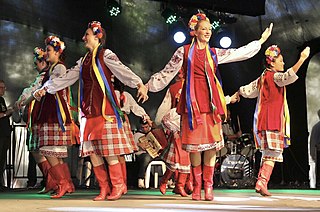
Czech Brazilians refer to Brazilians of Czech descent who were born in or who trace their ancestry to the territory of the historic Czech lands or succession states, now known as the Czech Republic, and are residents and/or citizens of Brazil.

Corumbá International Airport is the airport serving Corumbá, Brazil.

The 2009 swine flu pandemic in Brazil began on April 25, 2009, with two people, spreading to 34 over the first two weeks. CDC calculate that Africa and Southeast Asia, which have 38% of the world's population, accounted for a disproportionate 51% of the deaths.

Events in the year 2020 in Brazil.
Miss Brazil World 2014 was the 25th edition of the Miss Brazil World pageant and the 9th under MMB Productions & Events. The contest took place on August 9, 2014. Each state, the Federal District and various Insular Islands competed for the title. Sancler Frantz of Ilha dos Lobos crowned her successor, Julia Gama of Rio Grande do Sul at the end. Gama represented Brazil at Miss World 2014. The contest was held at the Costão do Santinho Resort in Florianópolis, Santa Catarina, Brazil.
Miss Brazil World 2009 was the 20th edition of the Miss Brazil World pageant and 4th under MMB Productions & Events. The contest took place on July 4, 2009. Each state, the Federal District and various Insular Regions competed for the title. Tamara Almeida of Minas Gerais crowned Luciana Reis of Roraima at the end of the contest. Bertolini represented Brazil at Miss World 2009. The contest was held at the Hotel do Frade in Angra dos Reis, Rio de Janeiro, Brazil.

Miss Brazil 2016, officially Miss Brazil Be Emotion 2016, was the 62nd edition of the Miss Brazil pageant. It was held on 1 October 2016 at Citibank Hall in São Paulo, and was hosted by Cássio Reis and Daniele Suzuki with Karol Pinheiro as a backstage correspondent. Marthina Brandt of Rio Grande do Sul crowned her successor Raissa Santana of Paraná at the end of the event. Santana represented Brazil at the Miss Universe 2016 pageant and placed in the Top 13.
Miss Brazil 2008 was the 54th edition of the Miss Brazil pageant. It was held on 13 April 2008 at Citibank Hall in São Paulo, São Paulo State, Brazil and was hosted by Nayla Micherif and Guilherme Arruda with Renata Fan as a commentator. Natália Guimarães of Minas Gerais crowned her successor Natálya Anderle of Rio Grande do Sul at the end of the event. Anderle represented Brazil at the Miss Universe 2008 pageant. 1st Runner-Up, Vanessa Vidal of Ceará represented the country at Miss International 2008.
The 2022 Copa Verde Finals was the final two-legged tie that decided the 2022 Copa Verde, the 9th season of the Copa Verde, Brazil's regional cup football tournament organised by the Brazilian Football Confederation.

















